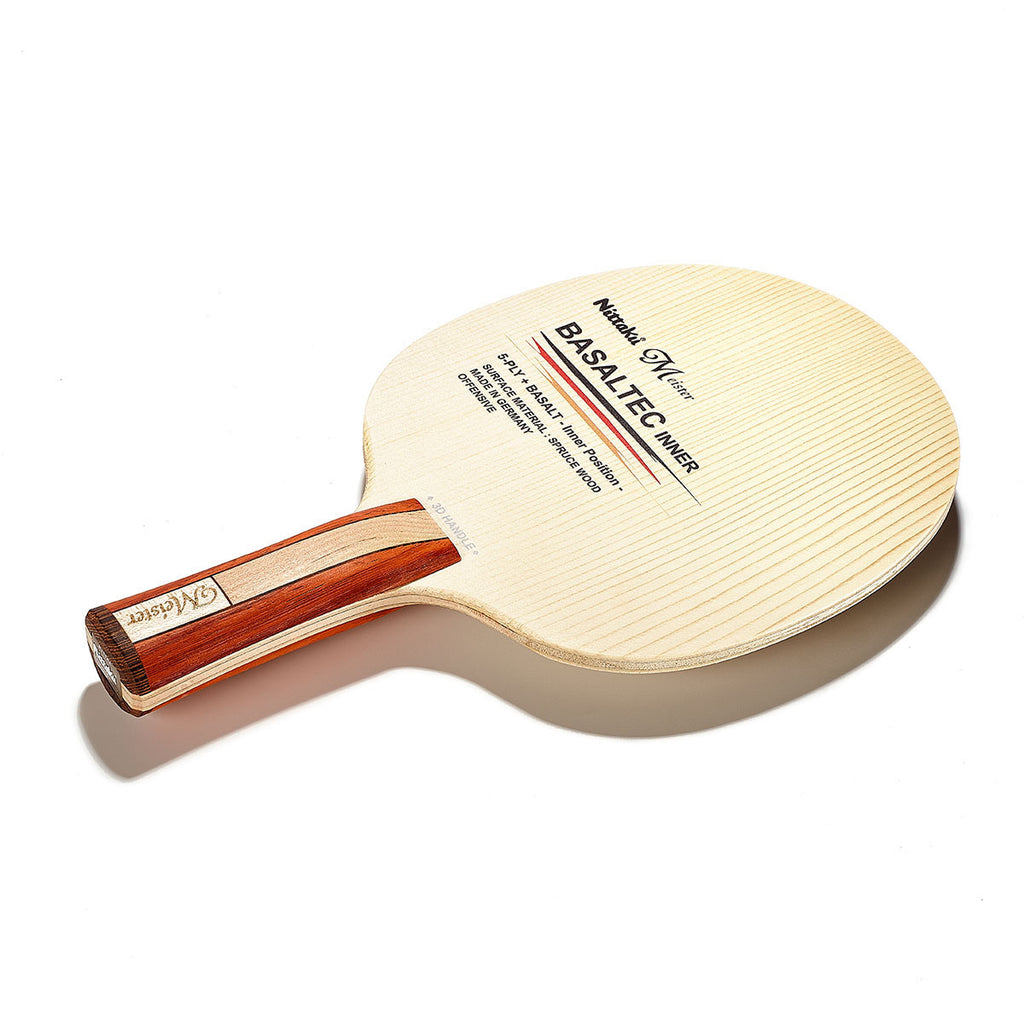This user has no status.
This user has no status.
Member
Hi, I’m looking for opinions regarding flexible/stiff - hard/soft blades for learning techniques. I’m a newbie, hungry for information about the equipment and techniques. I’ve been playing (actually, more training than playing) for about 4 months now. In these 4 months I tried 4 blades – first, a very soft blade Donic New Impuls 6.5. With Xiom Intro it feels like soft mushy cardboard, hated it, so I upgraded to New Impuls 7 (pine/kiri). It is noticeably harder, but still feels rather muddy. The I tried Stiga Allround Nostalgic (wenge outer ply), it feels like hitting the ball with a sheet of thin ice or a piece of tinplate, but I love it  Then I have a Nittaku Violin, which feels like something in-between, but I hate the handle, which supposed to be flared but is more like a straight one.
Then I have a Nittaku Violin, which feels like something in-between, but I hate the handle, which supposed to be flared but is more like a straight one.
I’ve read multiple posts on how using a carbon blade can hinder learning of proper techniques, how the beginners should use flexible blades with more dwell, etc. So my question is – in your opinion, for further learning should I use the Stiga Nostalgic ALL with a hard outer ply (which I like) or should I switch back to a soft blade (which I hate). Of course there is a third option to use any equipment I like to play with and not to give a toss about nobody’s opinions But it would be very interesting to hear some opinions. And I'm still curious how a carbon balde would feel like
But it would be very interesting to hear some opinions. And I'm still curious how a carbon balde would feel like 
Usually when something similar is posted, there are requests to post a video, so here’s my last video of a training session in forehand topspin. Please don’t kick my ass too hard and consider that I started my TT journey in November 2019, learning from Table Tennis Daily Academy subscription videos (and free Youtube videos, of course), and I’m 48 years old so my knees don’t like proper weight transfers and staying low... but I’m improving, my videos from two months ago look horrible
https://youtu.be/aAUwIZH41YI
I’ve read multiple posts on how using a carbon blade can hinder learning of proper techniques, how the beginners should use flexible blades with more dwell, etc. So my question is – in your opinion, for further learning should I use the Stiga Nostalgic ALL with a hard outer ply (which I like) or should I switch back to a soft blade (which I hate). Of course there is a third option to use any equipment I like to play with and not to give a toss about nobody’s opinions
Usually when something similar is posted, there are requests to post a video, so here’s my last video of a training session in forehand topspin. Please don’t kick my ass too hard and consider that I started my TT journey in November 2019, learning from Table Tennis Daily Academy subscription videos (and free Youtube videos, of course), and I’m 48 years old so my knees don’t like proper weight transfers and staying low... but I’m improving, my videos from two months ago look horrible
https://youtu.be/aAUwIZH41YI











